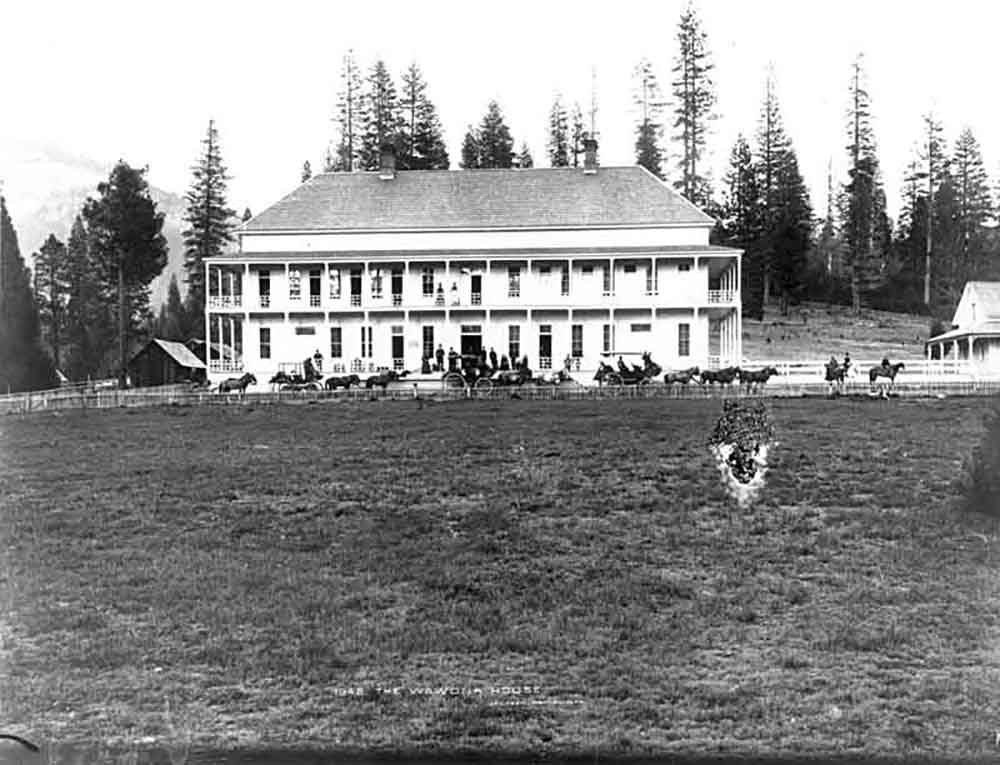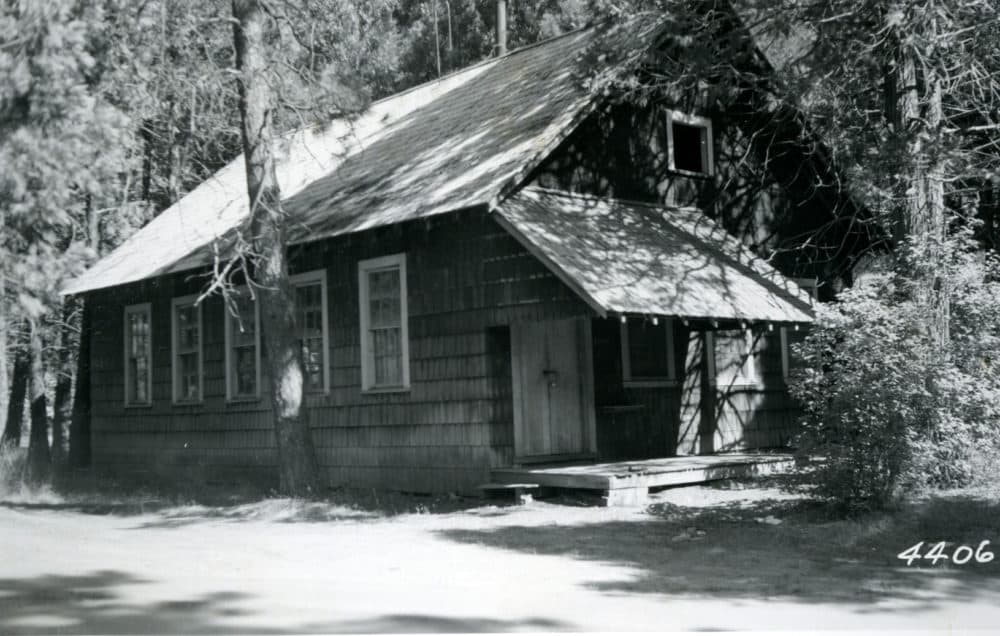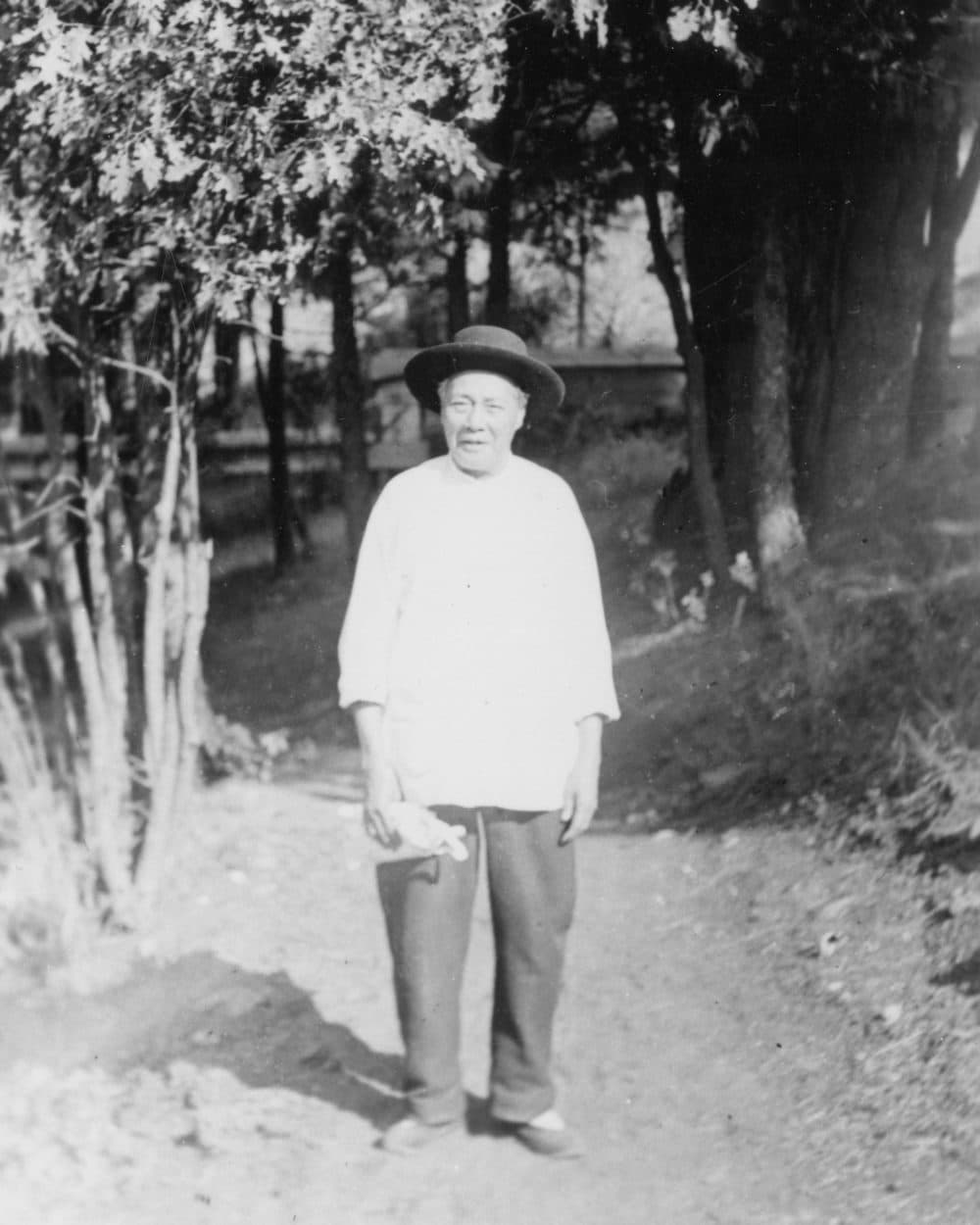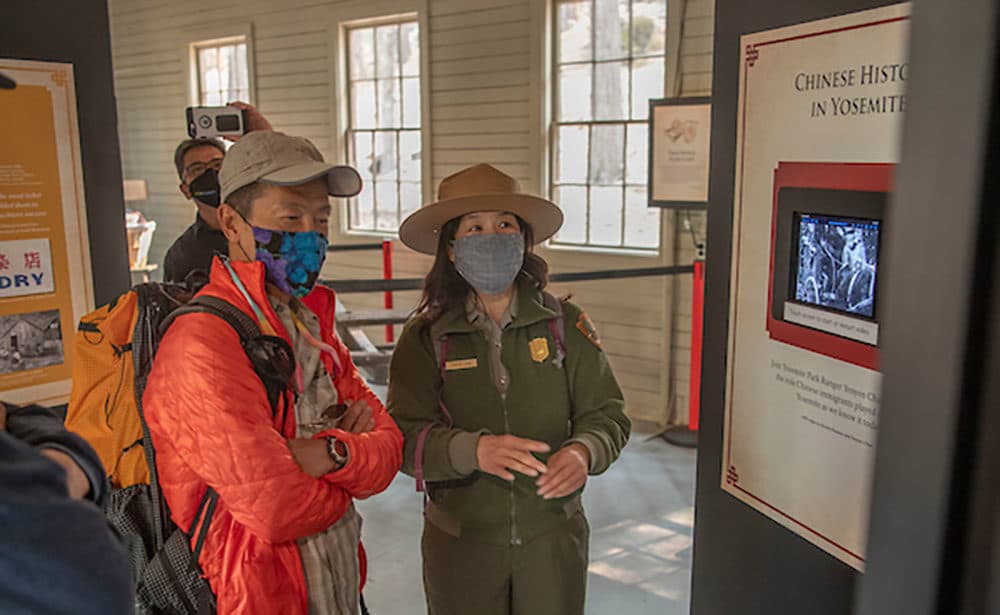Advertisement
Nestled between Yosemite's ancient sequoias is the hidden history of Chinese immigrants
Resume
Yosemite National Park is known for its striking granite cliffs and ancient sequoia trees. But for many years nestled within that stunning scenery was the hidden history of the hundreds of Chinese immigrants who helped develop the park.
Their stories have remained largely unacknowledged for more than a century — until now. This month, Yosemite opened a restored Chinese laundry building on its grounds to the public. The exhibit will highlight the contributions of Chinese migrants to the park.
Ranger Yenyen Chan played a crucial part in making the exhibit a reality. She's worked at the park since 2003 and spent years extensively researching the history of Chinese in Yosemite.
Chinese immigrants began arriving in greater numbers during the Gold Rush.
“Starting in 1848, they arrived in California just like people from all over the world. And they also started mining in the foothills of the Sierra Nevada range,” Chan says. “But pretty soon afterward, within two years, it was very difficult to become really wealthy.”

In 1850, the U.S. government passed the $20 per month Foreign Miners Tax, which made it difficult for immigrants to make a living mining. This led Chinese miners to look for other types of work.
Many workers took difficult, laborious jobs like helping build the transcontinental railroad in the 1860s after moving on from mining, Chan says.
When people first started flocking to Yosemite’s beautiful scenery, it was difficult to get to Yosemite Valley. Chinese workers were hired to build many of the early stage wagon roads in the park, she says.
Without the help of modern machinery, these workers used hand picks, shovels and wheelbarrows to build many of Yosemite’s primary roads.
The park’s elevation ranges from 2,000 feet to 13,000 feet above sea level, Chan says. Chinese workers helped build Tioga Road, which climbs from 4,000 feet to 10,000 feet in elevation and drops several thousand feet back down on the other side of the mountain.
“That was a 56-mile road that approximately 350 Chinese and 90 European-American road workers worked together to build in only 130 days,” she says. “So it was a pretty monumental feat.”
And the legacy of Chinese immigrants in Yosemite goes far beyond road workers: Several Chinese chefs made their mark on the area. Many Chinese immigrants used skills from home to work at hotels in the area as cooks and bakers, Chan says.
Ah You, for example, worked as the head chef at Yosemite’s Wawona Hotel for 47 years.

Another chef named Tie Sing worked as a cook for the U.S. Geological Survey for 30 years. He followed the map makers through the wilderness and cooked them “elaborate backcountry meals” — a difficult task during these several-week long trips, Chan says.
The mapmakers loved Sing so much that in 1899, they named Sing Peak after him.
In 1915, then-Assistant Secretary of the Interior Stephen Mather hired Sing to cook for his Mather Mountain Party trips. Mather was trying to convince Congress to form the National Park Service, which didn’t exist at the time. Within one year of the trips, Congress passed the Organic Act which established the NPS, Chan says.
“Those trips were so instrumental in convincing these people about the wonders of our wilderness areas,” she says. “So I like to think of Tie Sing of having this significant role in convincing Congress and the public of the need for the National Park Service.”
These Chinese workers largely stayed unnoticed and unrecognized for so many years, both during that time and the many decades of the park's history that followed.
Locals knew about the impact Chinese immigrants had on the area working on roads, in kitchens and in laundry facilities — but from 1882 to 1943, the Chinese Exclusion Act put a gap in this history, Chan says.
“This history was just under the surface, and local people in and around Yosemite knew about the contributions of the Chinese. They helped work in the ranches, they helped in the farms,” she says. “But the story just hadn't been pieced together.”

Asian American visitors get a sense of pride seeing the park recognize their ancestors’ stories, she says.
As a park ranger, Chan aims to deepen visitors’ connections with Yosemite. She decided she wanted to inspire people to connect with nature after her first backpacking trip through the park as a teenager.
Park rangers are also storytellers, she says, who share tales of the animals, plants and cultural heritage of Yosemite.
“I think it's important to share the contributions made by all people in this country,” she says, “including people like Tie Sing and Ah You and the early Chinese who helped make Yosemite what it is today.”
Kalyani Saxena produced and edited this interview for broadcast with Todd Mundt. Allison Hagan adapted it for the web.
This segment aired on October 20, 2021.

